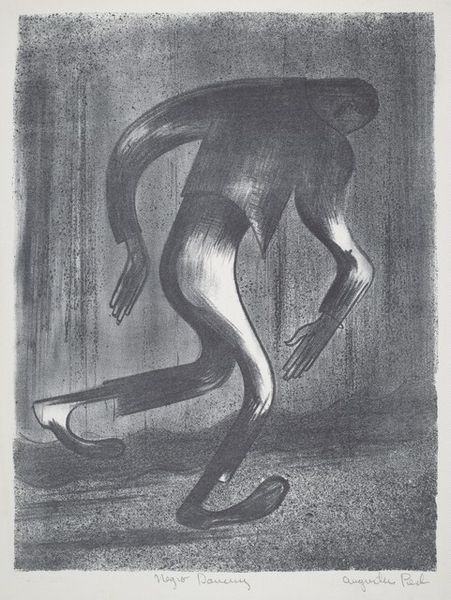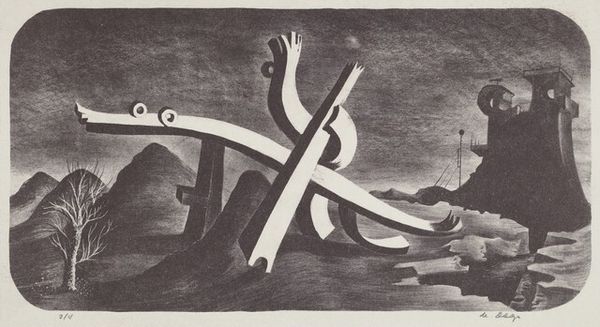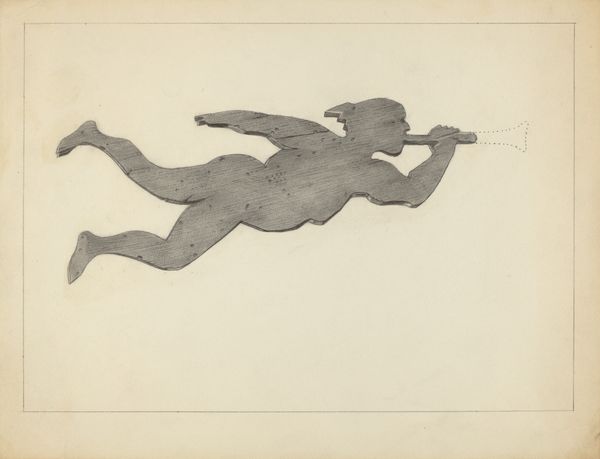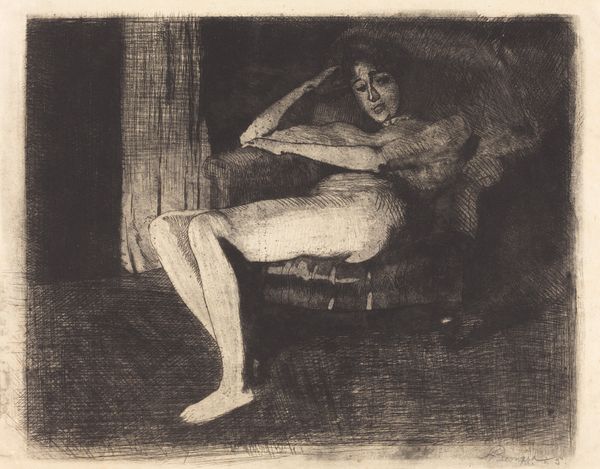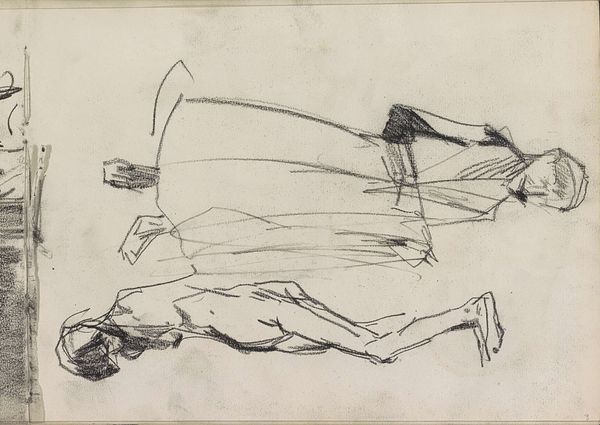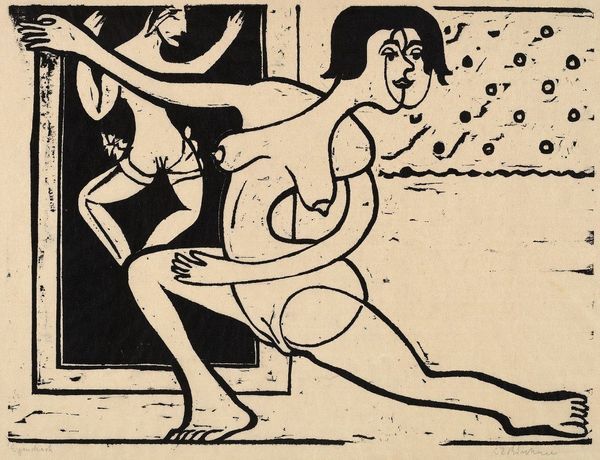
drawing, print
#
drawing
#
narrative-art
# print
#
caricature
#
caricature
#
figuration
#
watercolour illustration
Dimensions: sheet: 22.38 × 30 cm (8 13/16 × 11 13/16 in.)
Copyright: National Gallery of Art: CC0 1.0
Curator: Audrey Niffenegger's 2003 print, "The Death of the Lighthouse Keeper," really jumps out with its somber mood despite the vibrant colors. Editor: Yes, I am struck by how Niffenegger’s distinctive style uses color almost against type here. The lighthouse keeper’s yellow slicker is almost cartoonish, but his forlorn face pulls me toward the systemic isolation and precarity of maritime labor. Curator: It's the interplay of drawing and printmaking techniques that fascinates me. You can see the artist's hand in the linework and the subtle variations in the gray wash, while the printmaking adds a layer of repeatability, a nod to industrial processes. What kind of consumption are we seeing here? Nautical safety equipment maybe, which are a sign of both technological advancements and a need to work within natural forces, right? Editor: Absolutely, and it is through a consideration of those natural forces that this work becomes charged. We have to look at how gender plays into it. Throughout time, and still now, caretaking, mourning, or remembering fallen at sea disproportionately falls to women while this figure fails to maintain a necessary masculine grip over an essential system of labor. How did it break down here and what kind of systems must take its place? Curator: Interesting, the line-work throughout, particularly in the suggestion of rain, does give this feeling of everything being overwhelmed. Speaking of lines, I love how Niffenegger employs color to define form without relying on heavy outlines. It pushes against traditional caricature while borrowing its exaggeration of shape and expression. Editor: Yes! We see this narrative carried throughout so many stories; a fallible, lonely figure set against an indomitable landscape in a way that romanticizes the exploitation and extraction carried out at sea. With the rising tides and the collapse of ecological safety nets throughout the ocean, does it continue to memorialize the figure who has stewardship over these locations? What happens if that is seen as a figure to be replaced by distributed models of knowledge, skill sharing, or new forms of care? Curator: Thinking about the relationship of individual and system opens up an expansive avenue for discussion about the role of maritime labor, or any profession for that matter. Editor: Agreed; this print really does compel us to see the convergence of individual struggle, ecological change, and narrative expectation within our communities.
Comments
No comments
Be the first to comment and join the conversation on the ultimate creative platform.

